|
PUTTING OUT LINE
Come late winter-early spring the tubing system is laid out. Sap comes directly from the tree through small feeder tubes connected to this larger main line tubing system. The sap then flows directly downhill through this network into the central collection point, the sugar shack.
|
|
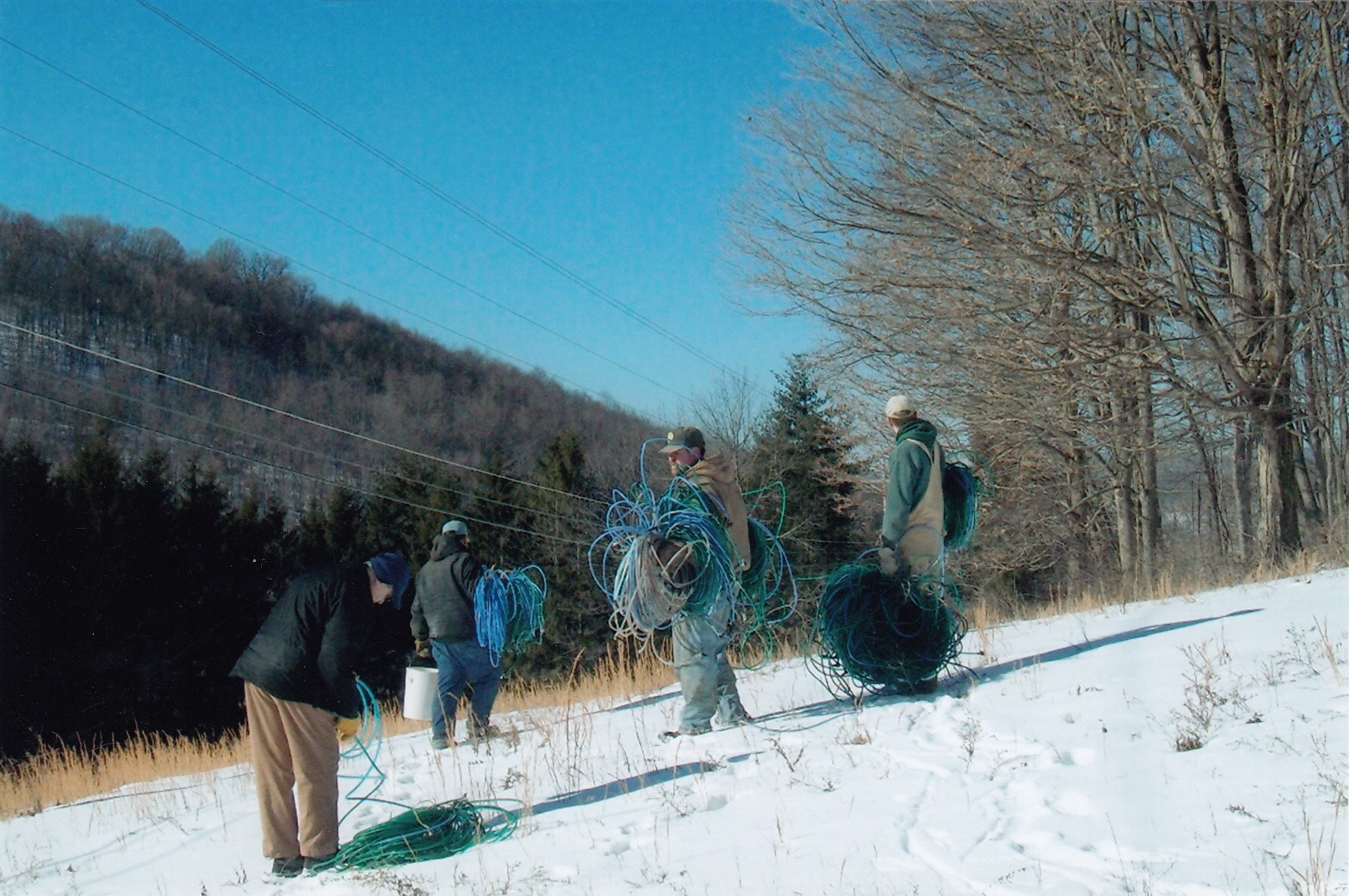 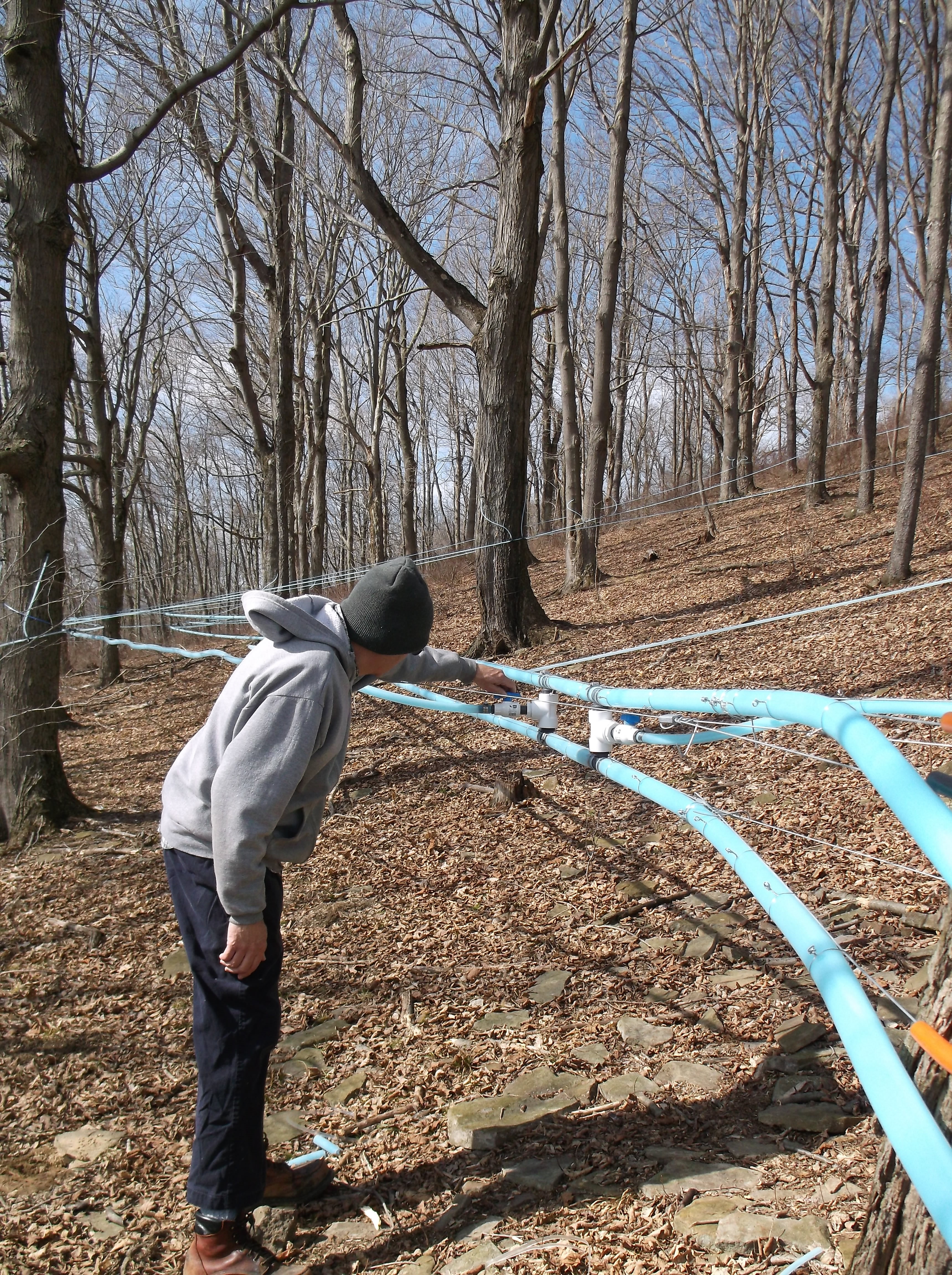 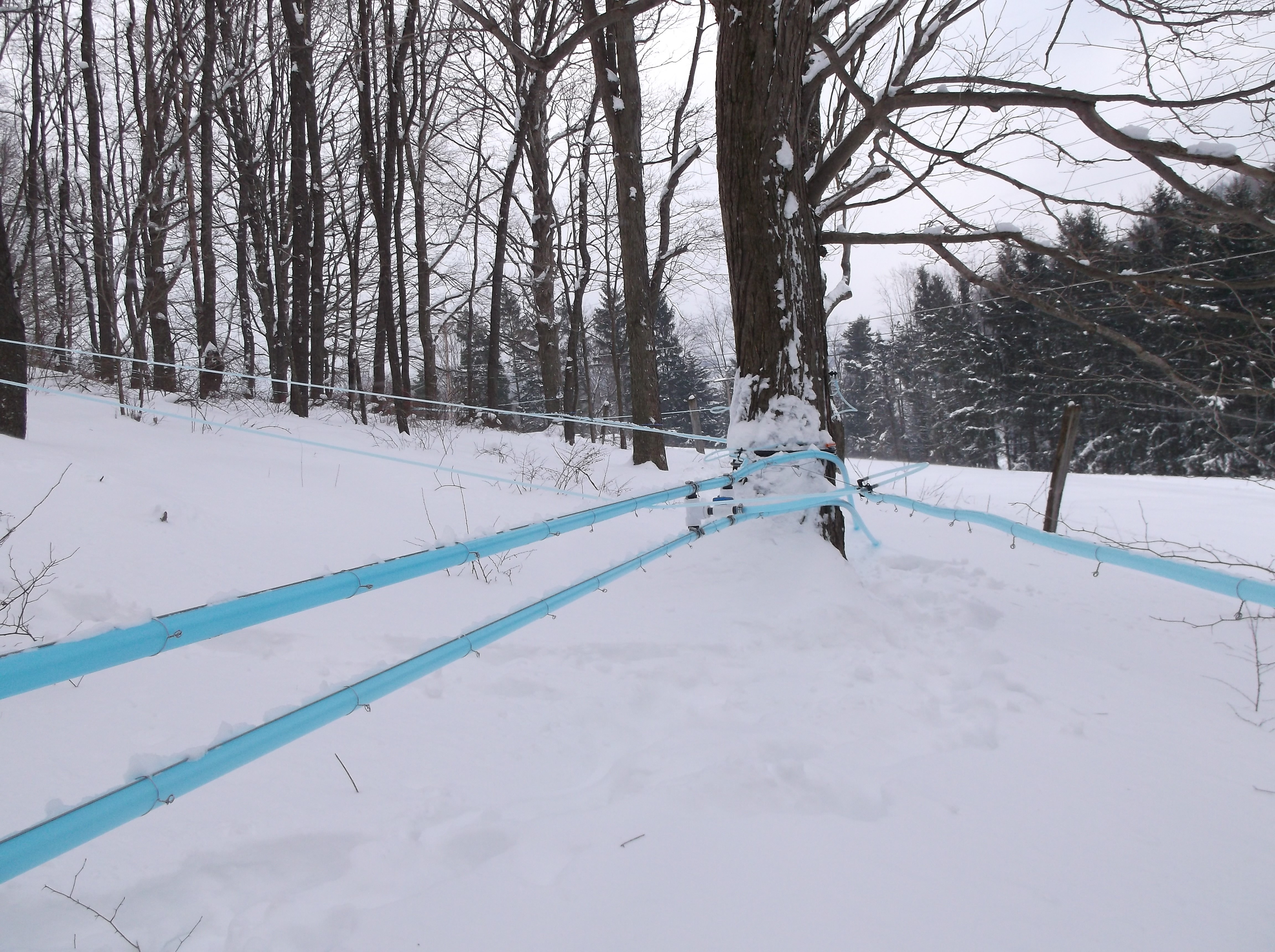  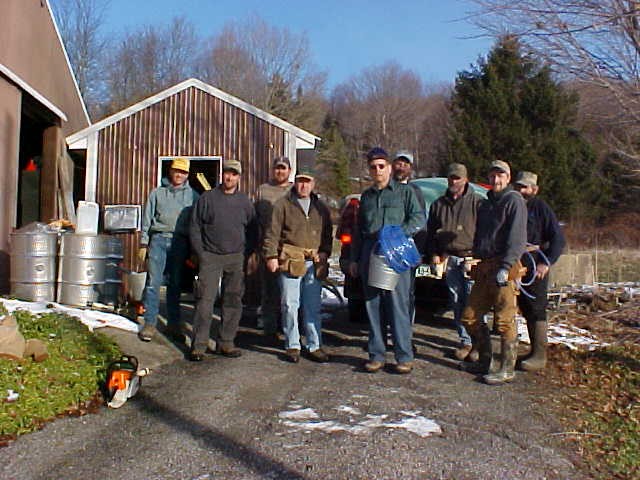
|
TAPPING
A maple tree needs to be about 40 years old before it will be large enough to tap for syrup production. By then the trunk diameter should be 10-14 inches, the minimal diameter required for tapping. A spot is selected on the truck 2-4' above the ground. where a hole 2-21/2" deep is then drilled into the wood. A collection spout is inserted and tapped lightly into the tree. A piece of tubing line is attached to the spout to allow the sap to flow directly from the tree to the main line. In an average year each tap hole will produce about 10-12 gallons of maple sap per season, enough for about one quart of pure Pennsylvania maple syrup. It takes approximately 50 gallons of maple sap to make 1 gallon of maple syrup. |
 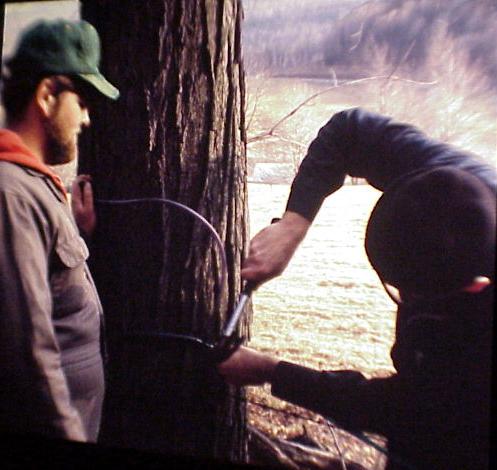  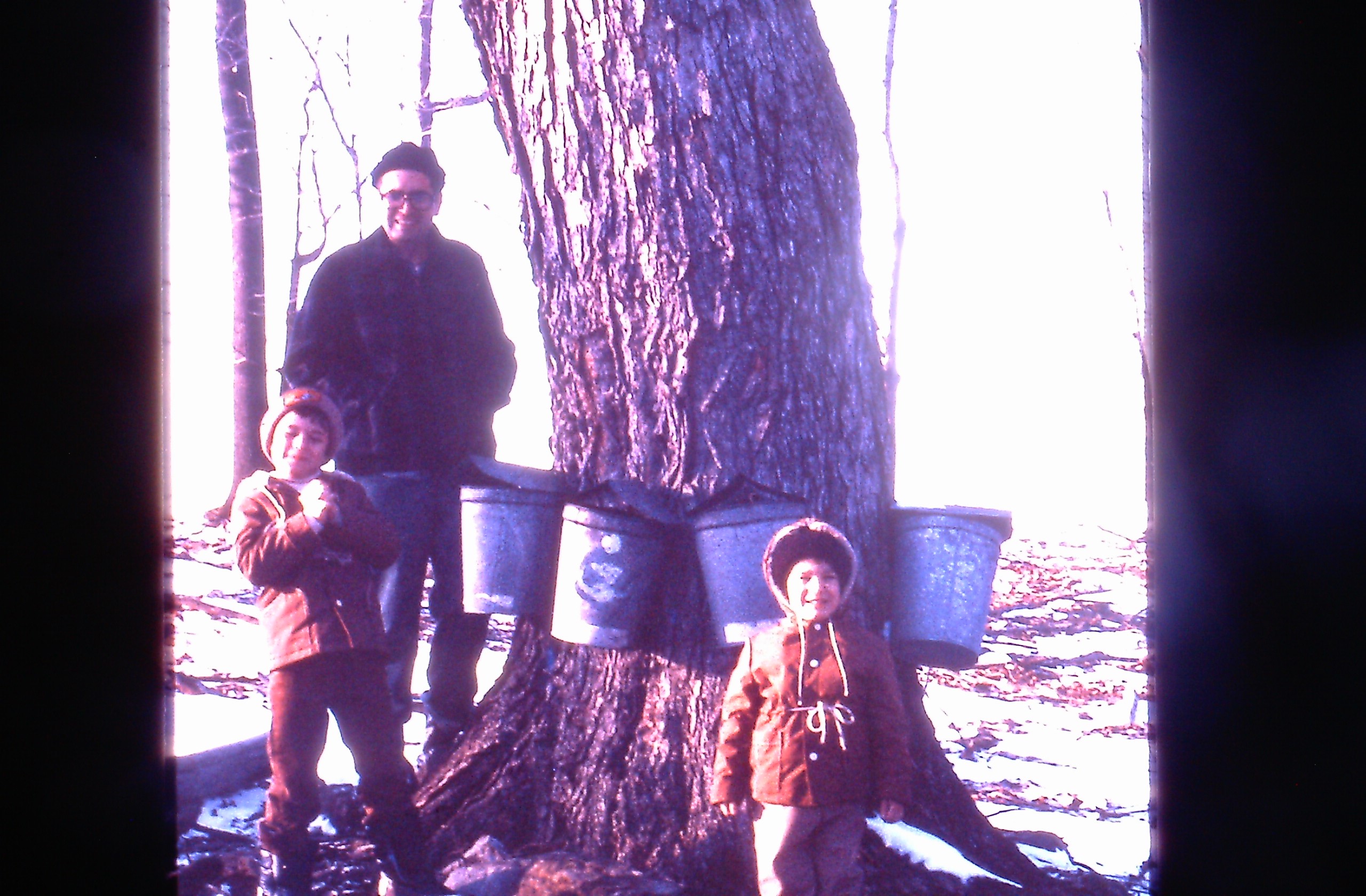 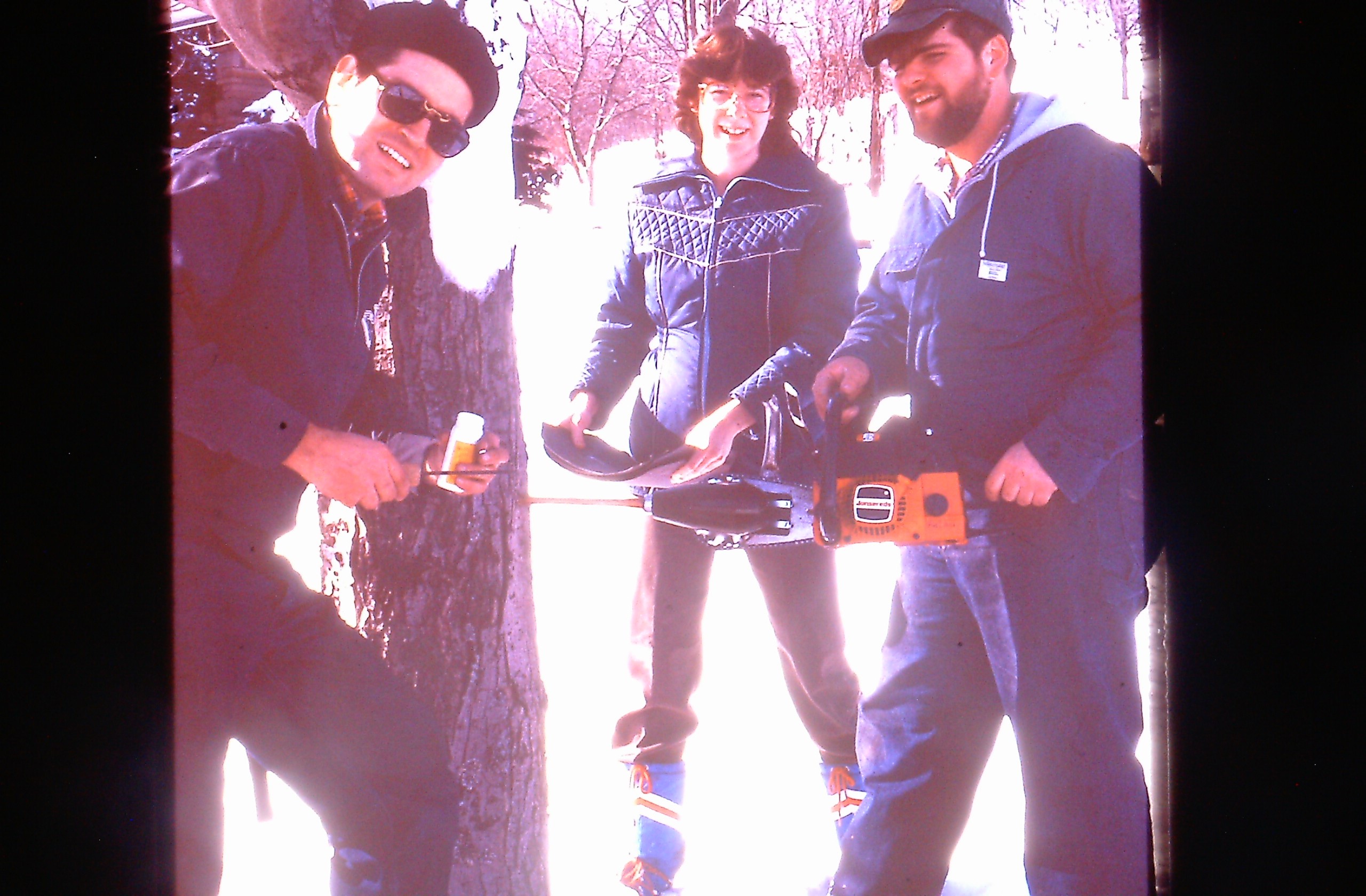 |
|
GATHERING
While the sugaring season may last 6-10 weeks, most of the sap will be collected in 10 or fewer days. Sap flow occurs when the daytime temperatures are in the 40's and below freezing at night. If the tubing system does not flow directly into the camp, it must be collected by gathering the sap from individual buckets hung on the trees directly or collected in holding tanks set in truck beds, which is then pumped into the camp.
|
  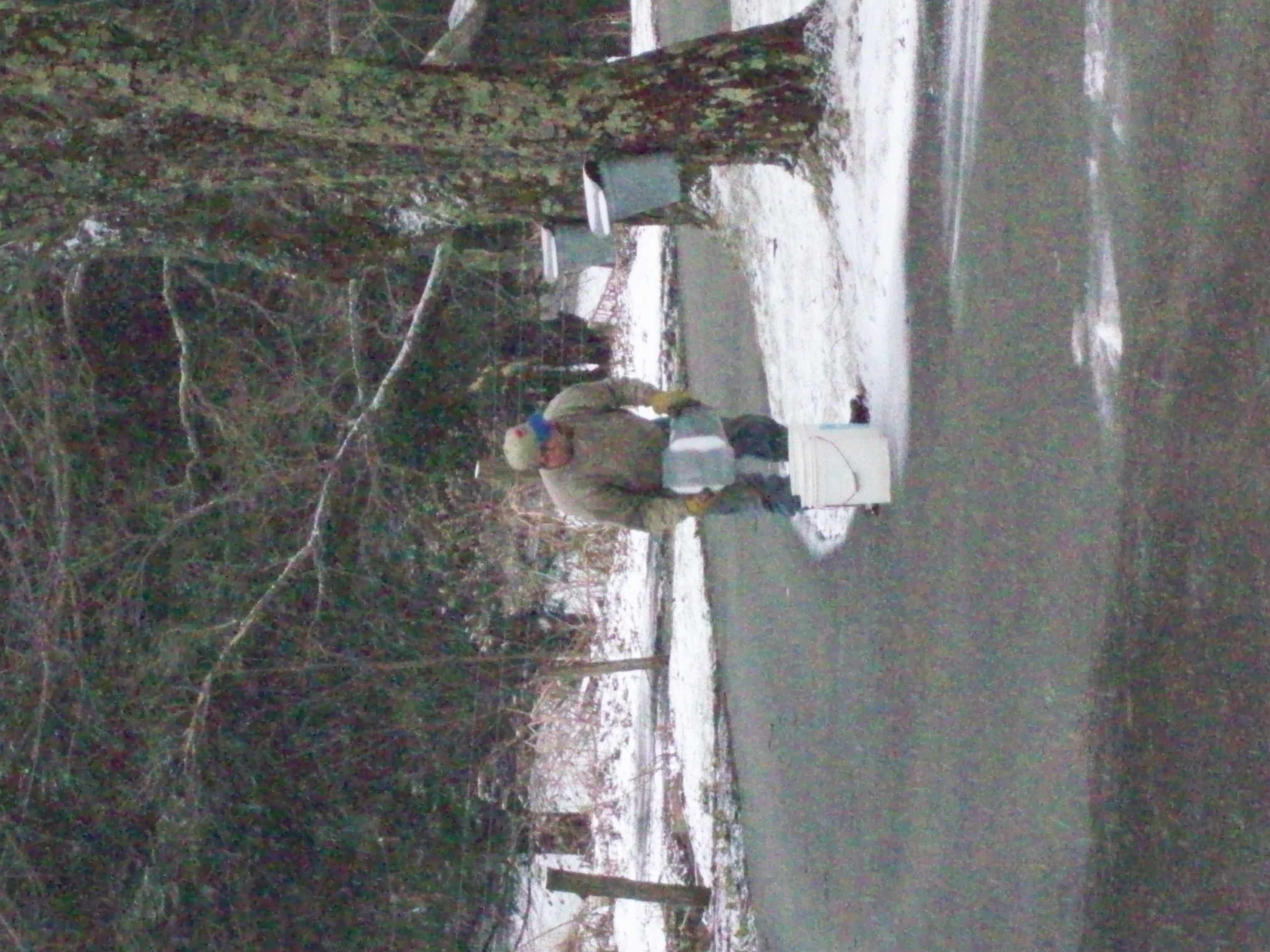    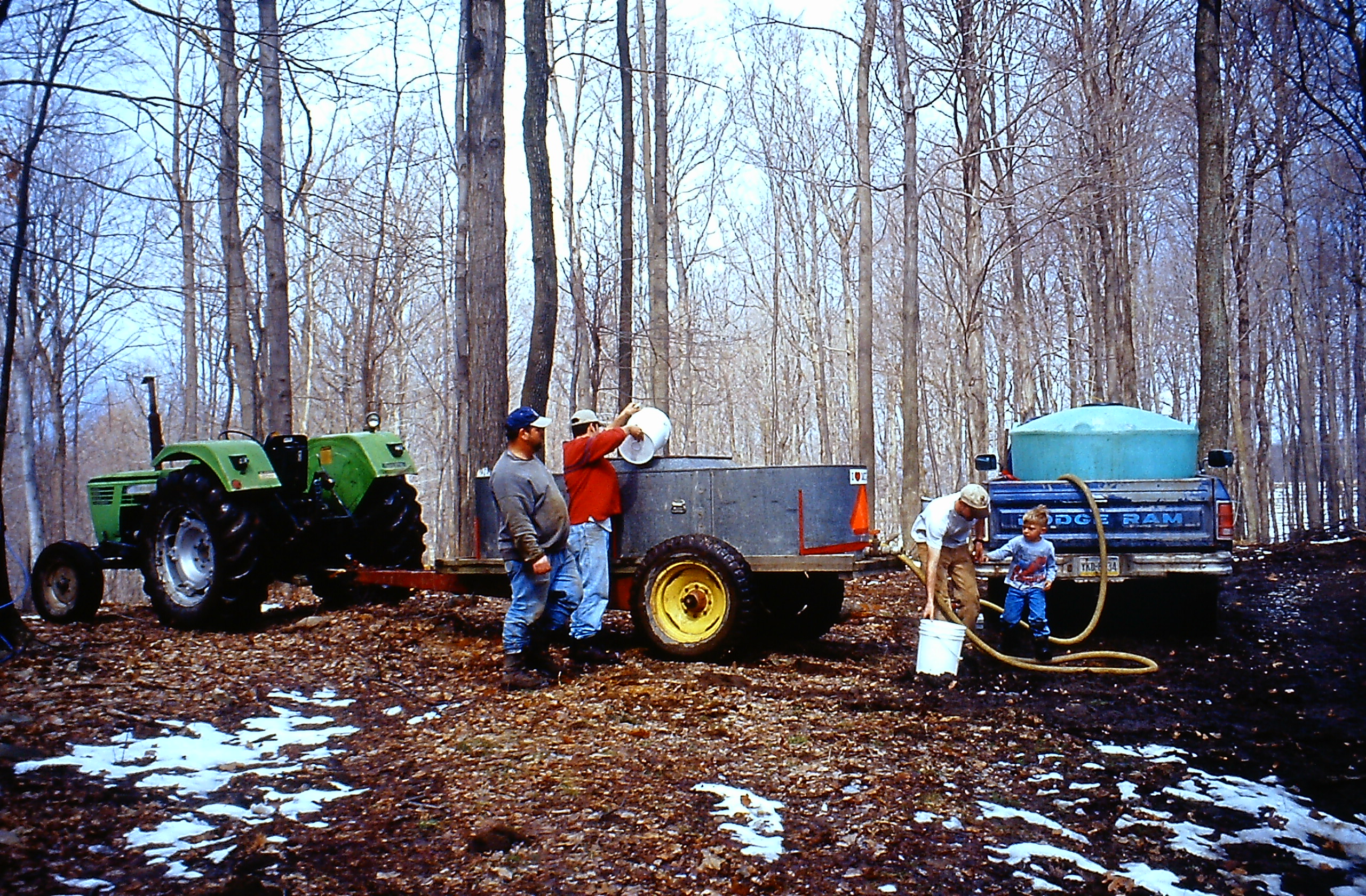 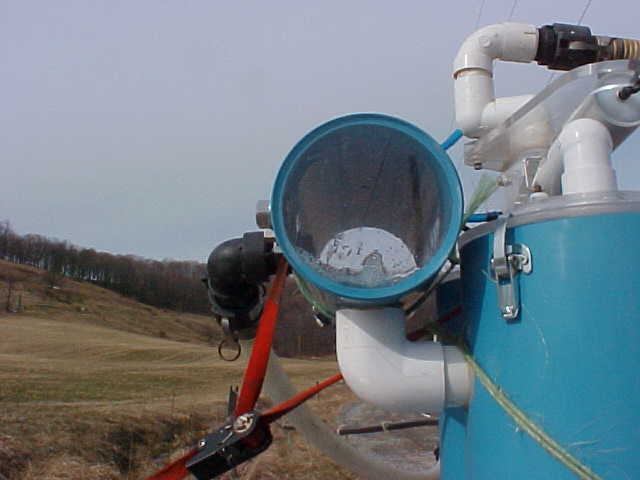     |
|
BOILING
Sap averages about 2% sugar and 98% water. When syrup is finished it is 33% water and 67% sugar. The water is removed from the sap by a reverse osmosis and an evaporation process. The reverse osmosis filtering device takes a portion of the water out of the sap before it is boiled. This reduces the time needed for the sap to then boil in the fuel operated evaporating pan, in order to remove the remainder of the water. The automatic draw off system is programmed to release the finished product-syrup-when its boiling point is reached, which is 219 degrees Fahrenheit, or 7 degrees above the boiling point of water.
|
 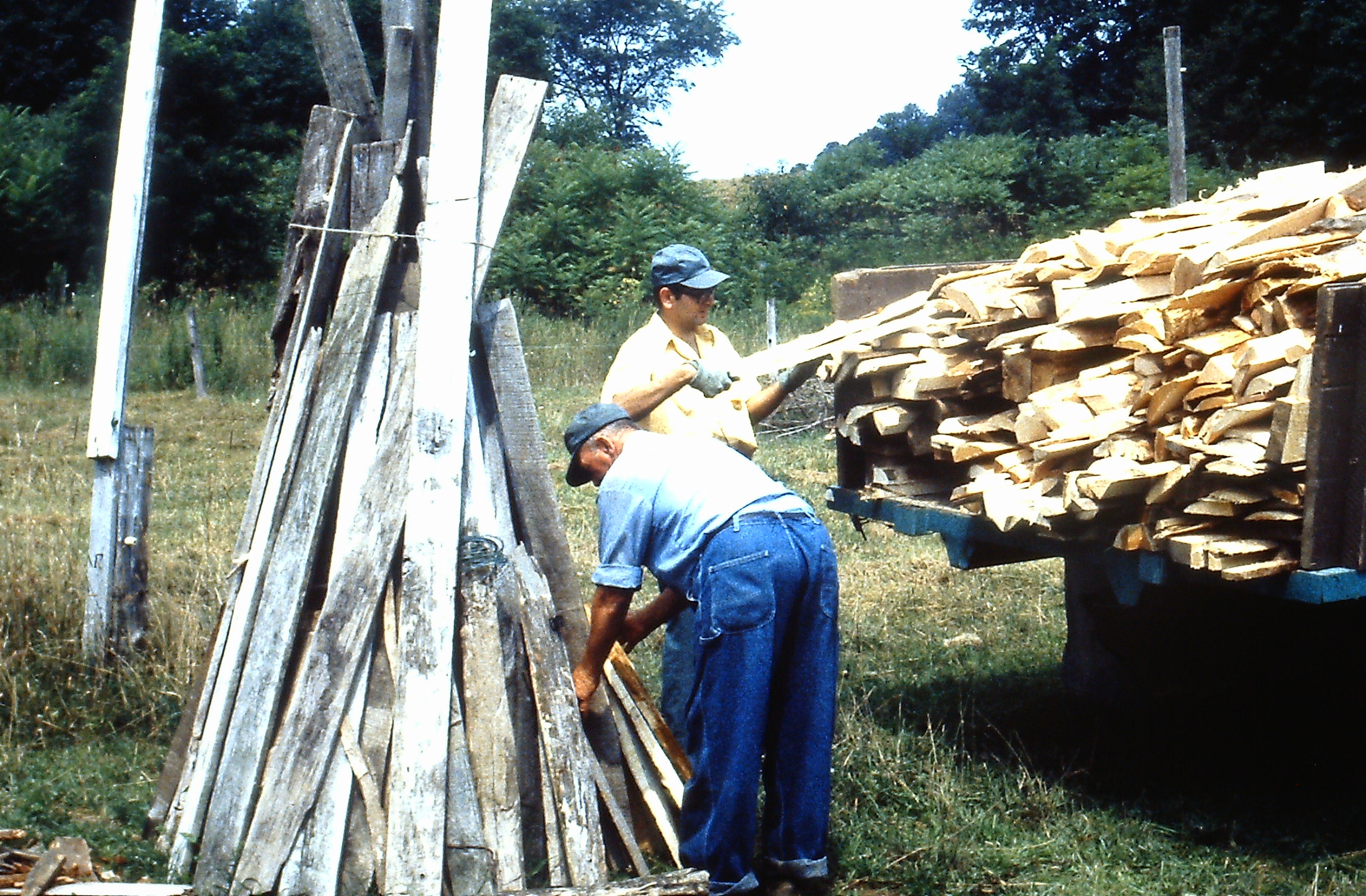      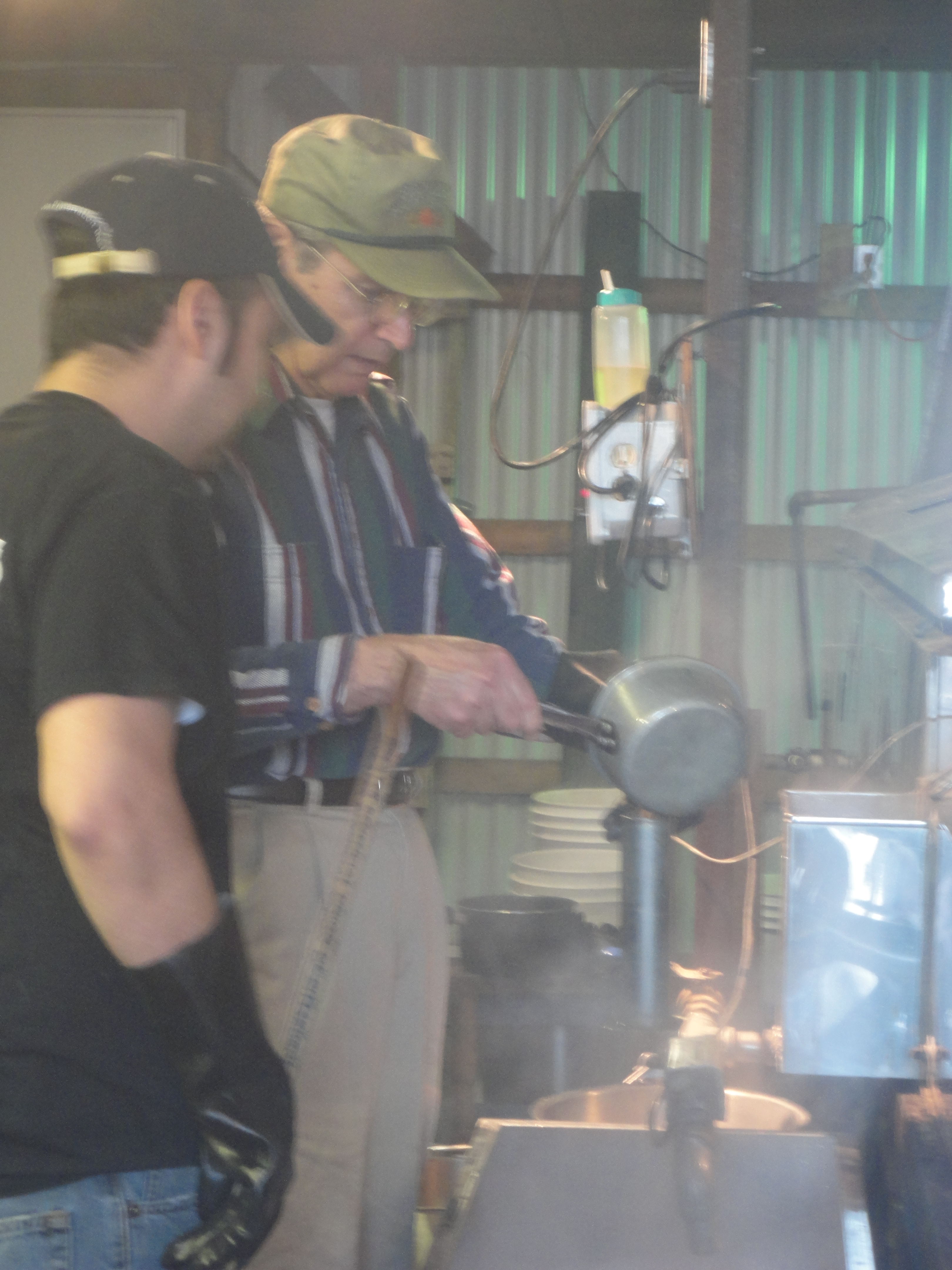 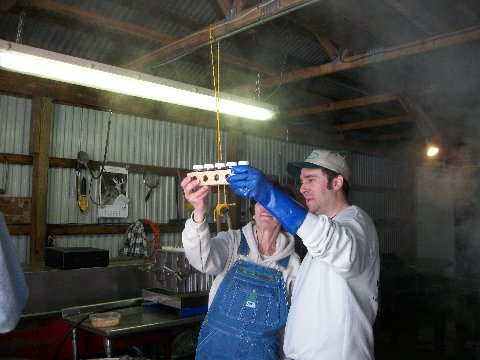 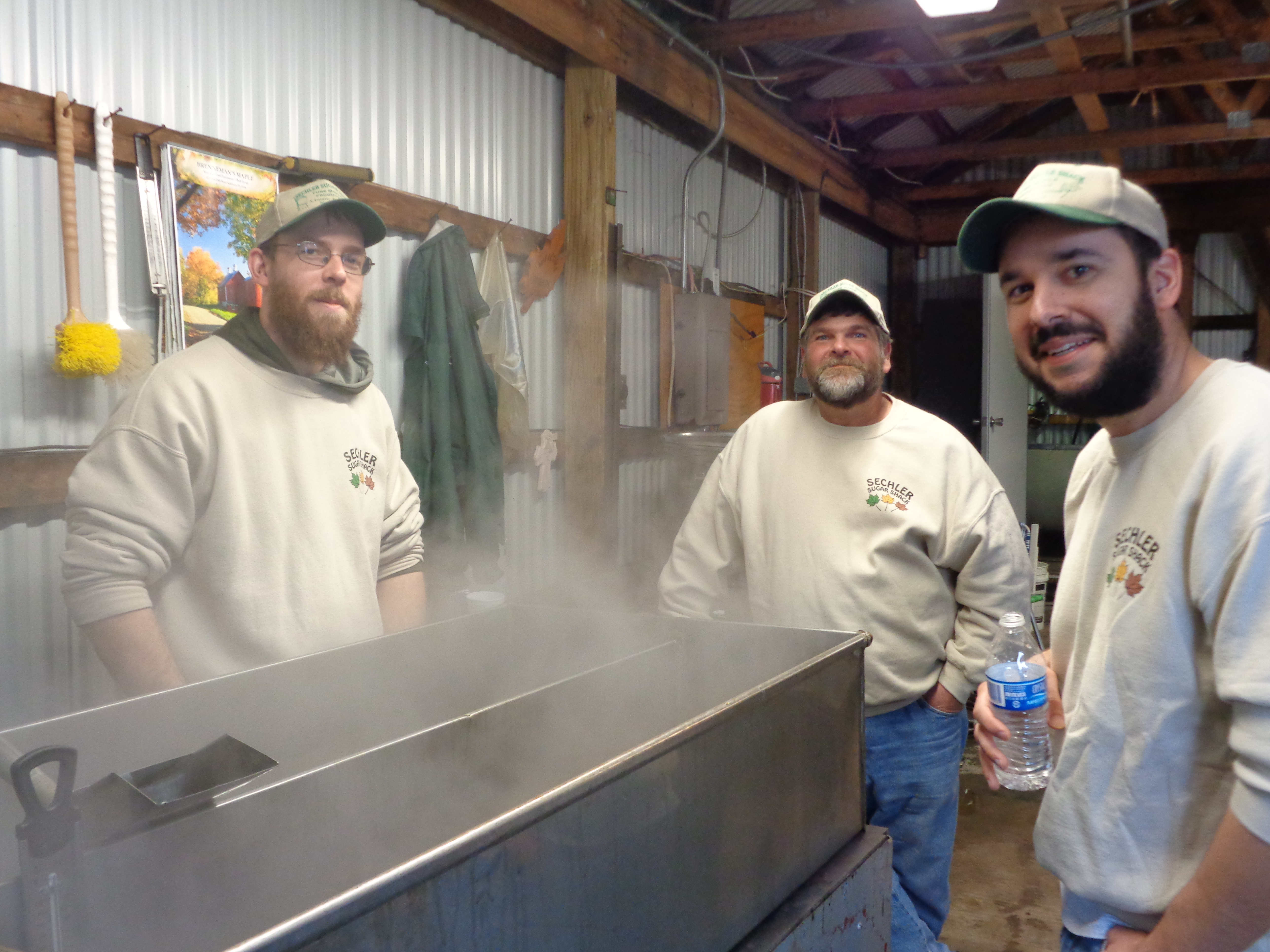  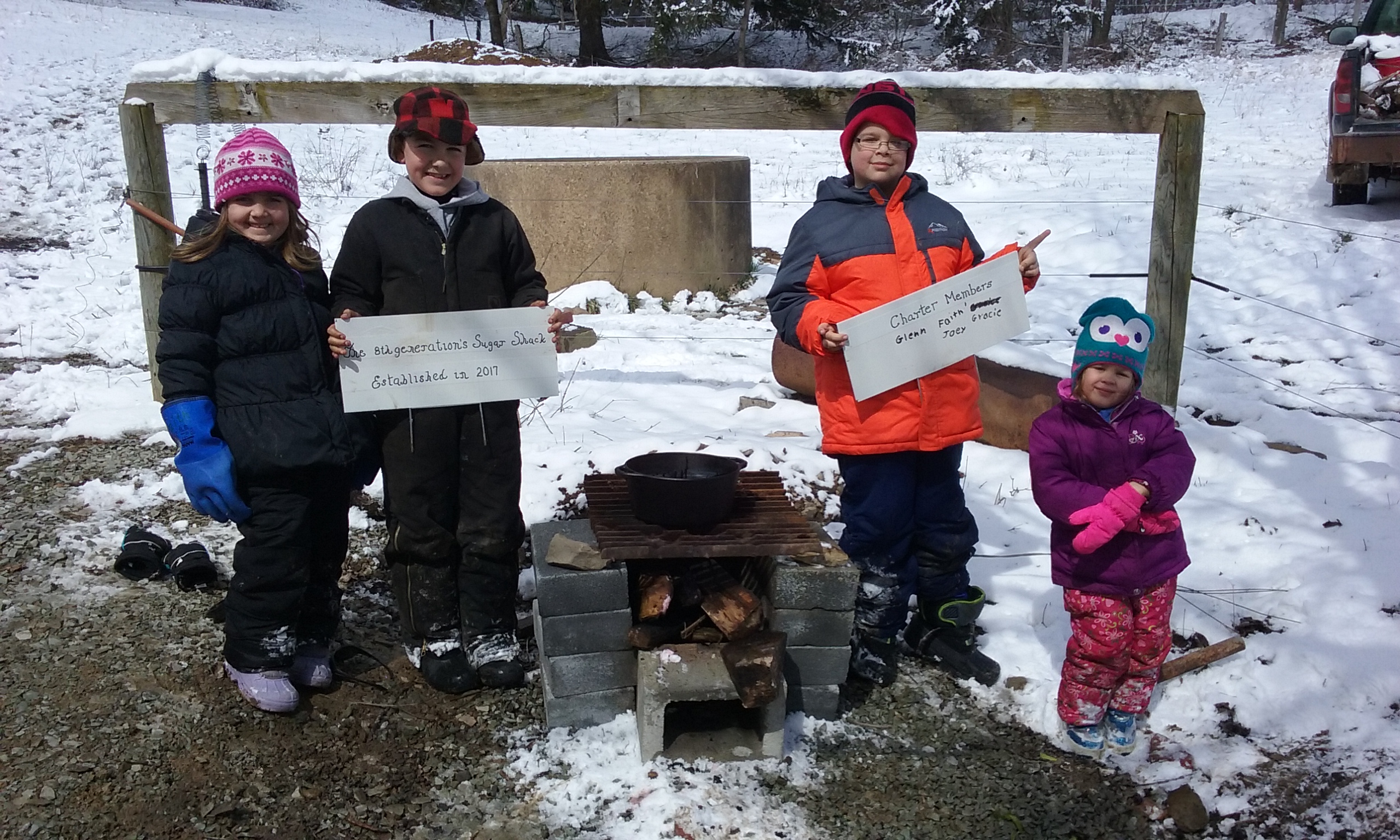 |
|
FILTERING
This filtering press is used to improve the appearance of as well as remove suspended particles, such as sugar sand, from the syrup.
|
     |
|
CANNING
The filtered syrup is then placed into the finishing pan where a temperature of at least 185 degrees F is maintained while packaging the syrup to prevent spoiling.
|
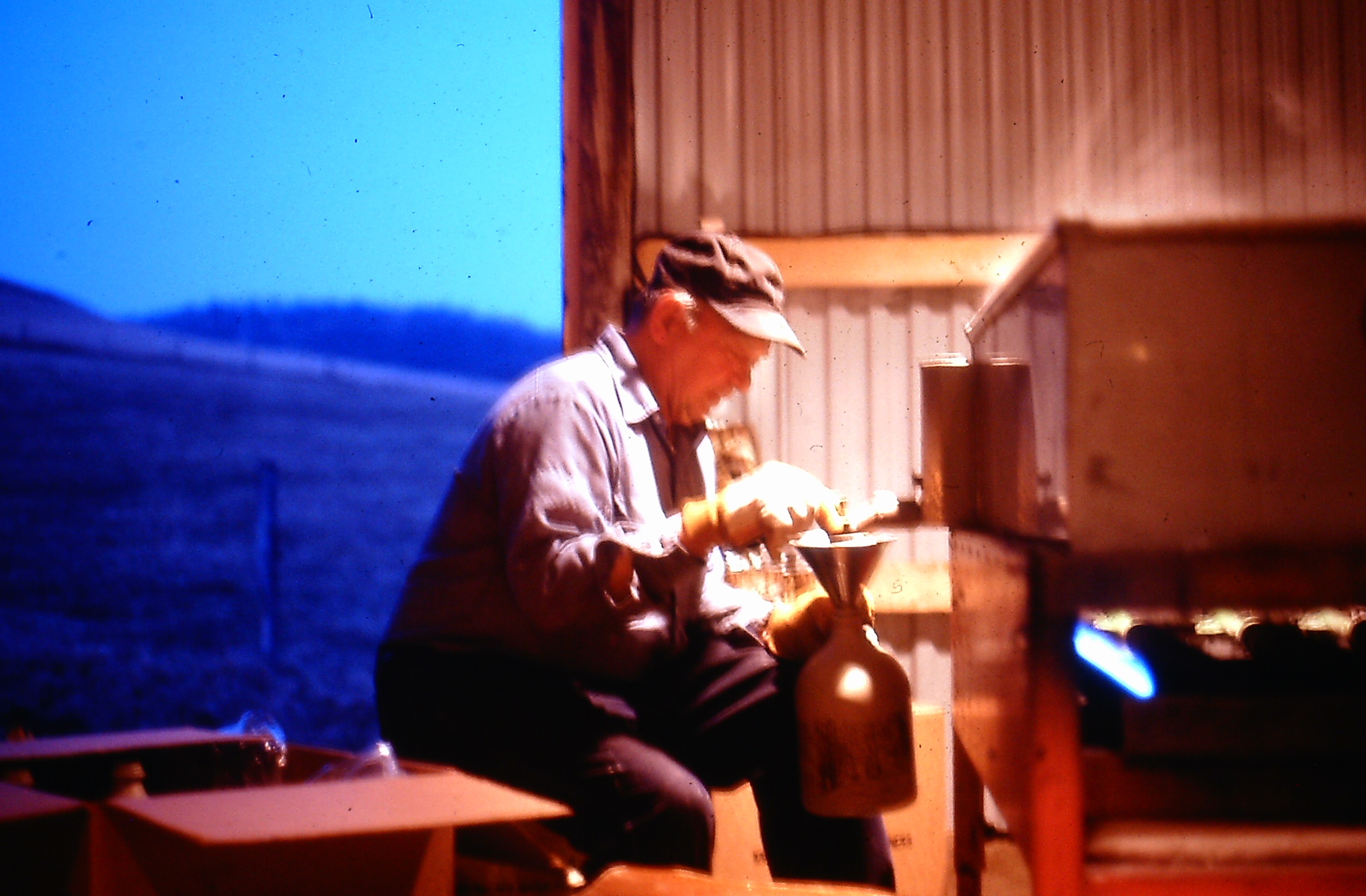  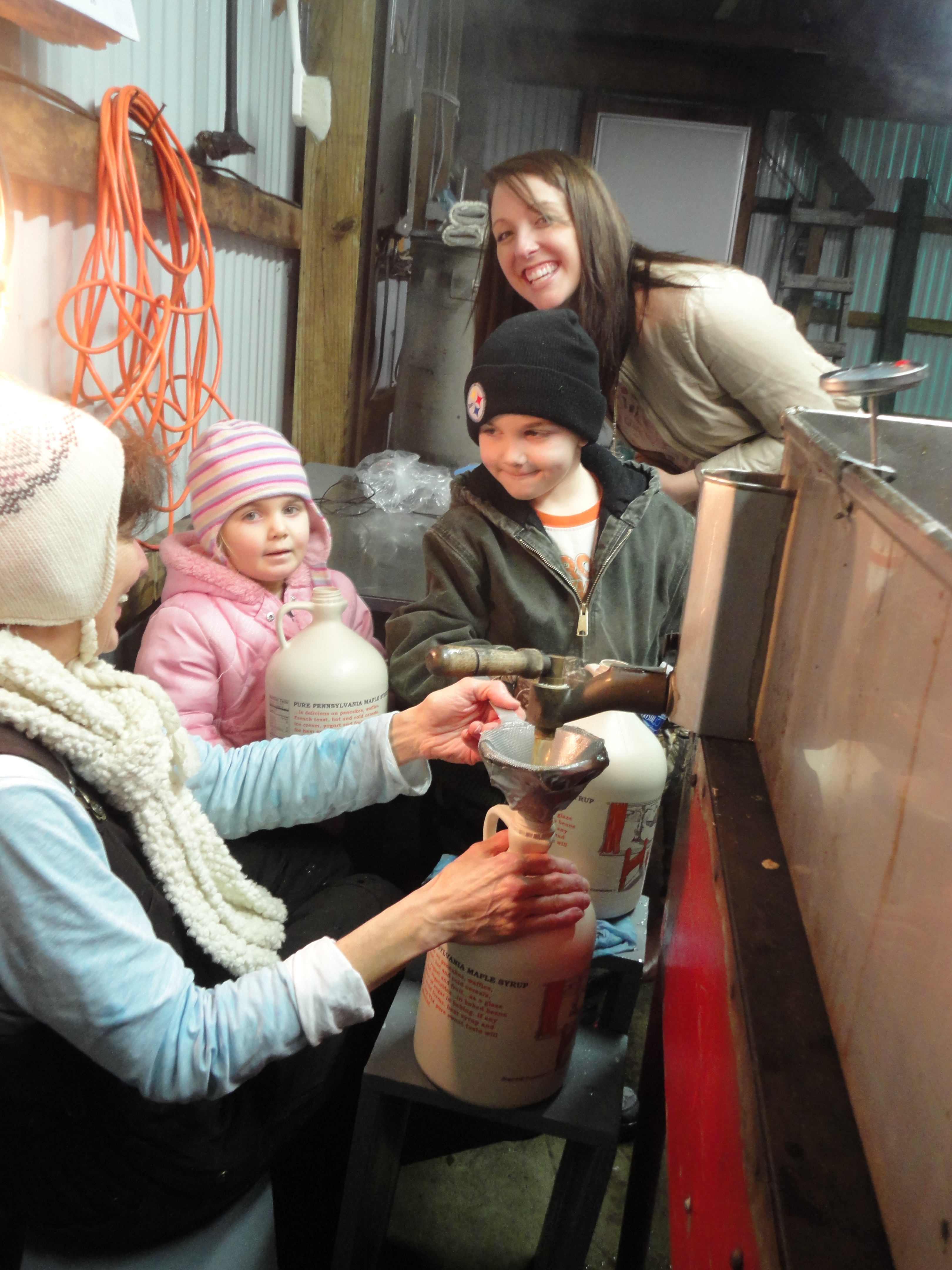 |
|
CLEANUP
Within the next couple of weeks the laborious job of cleaning out the lines, evaporator and all equipment begins and continues into the summer months.
|
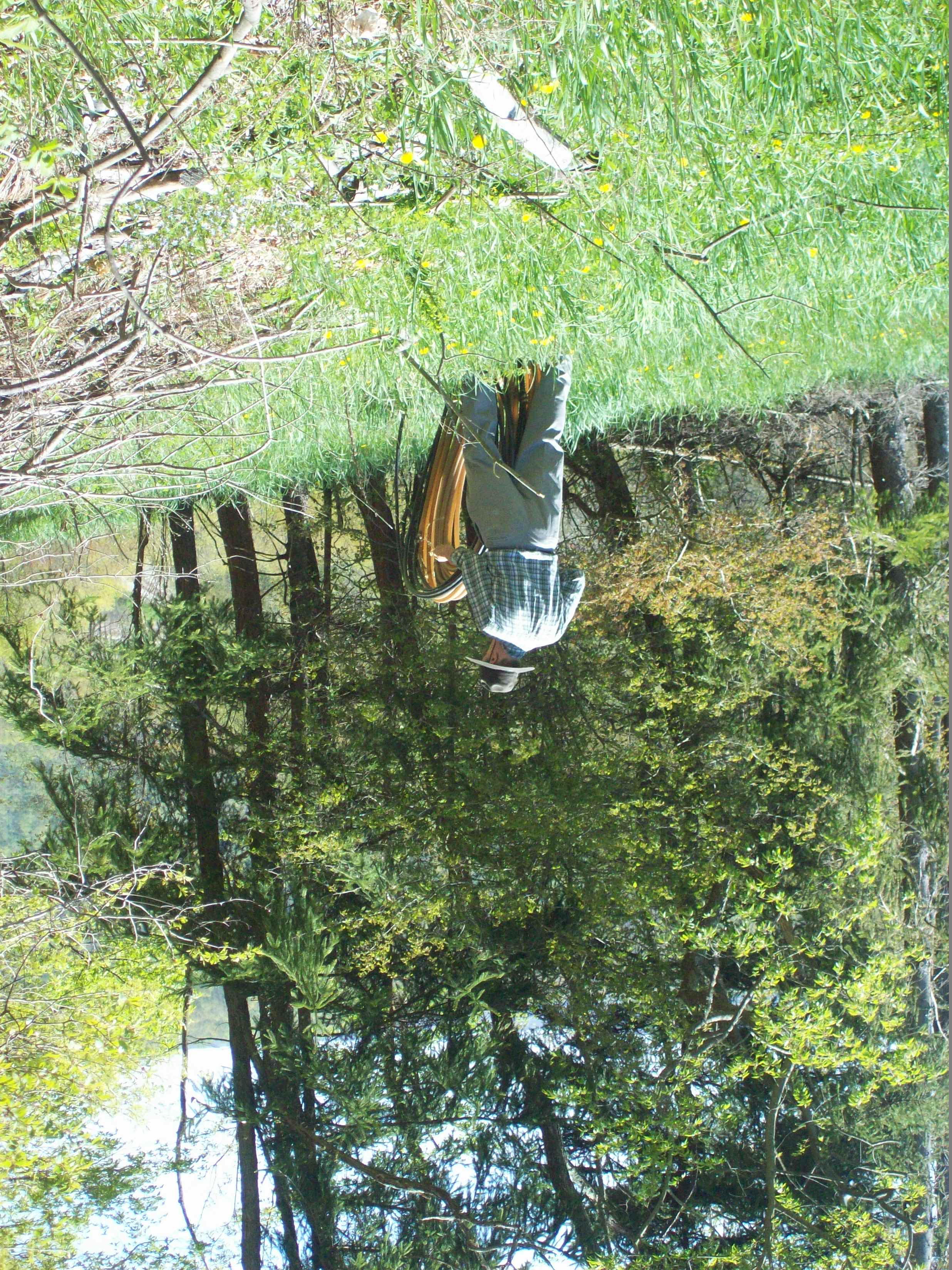   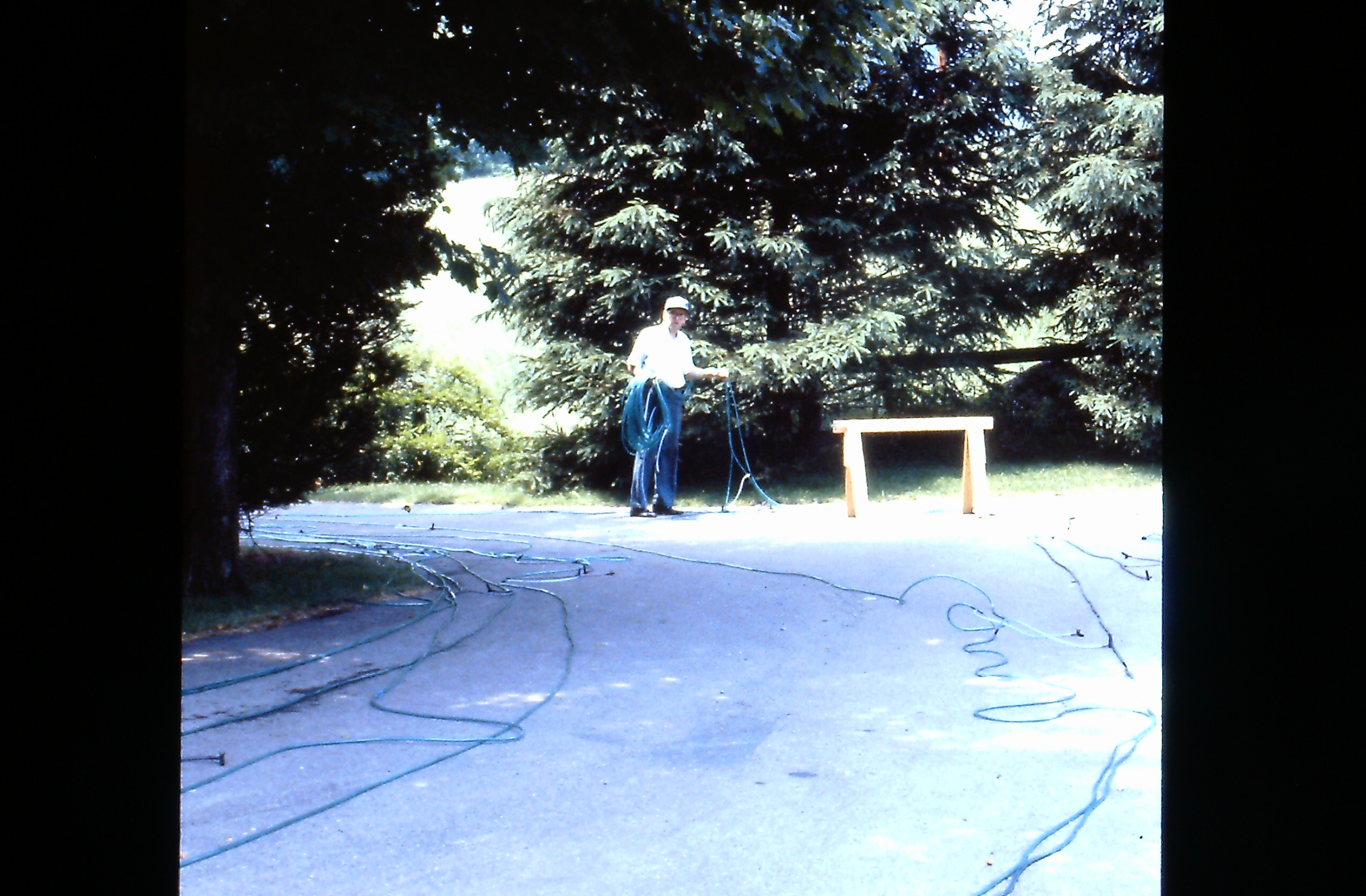  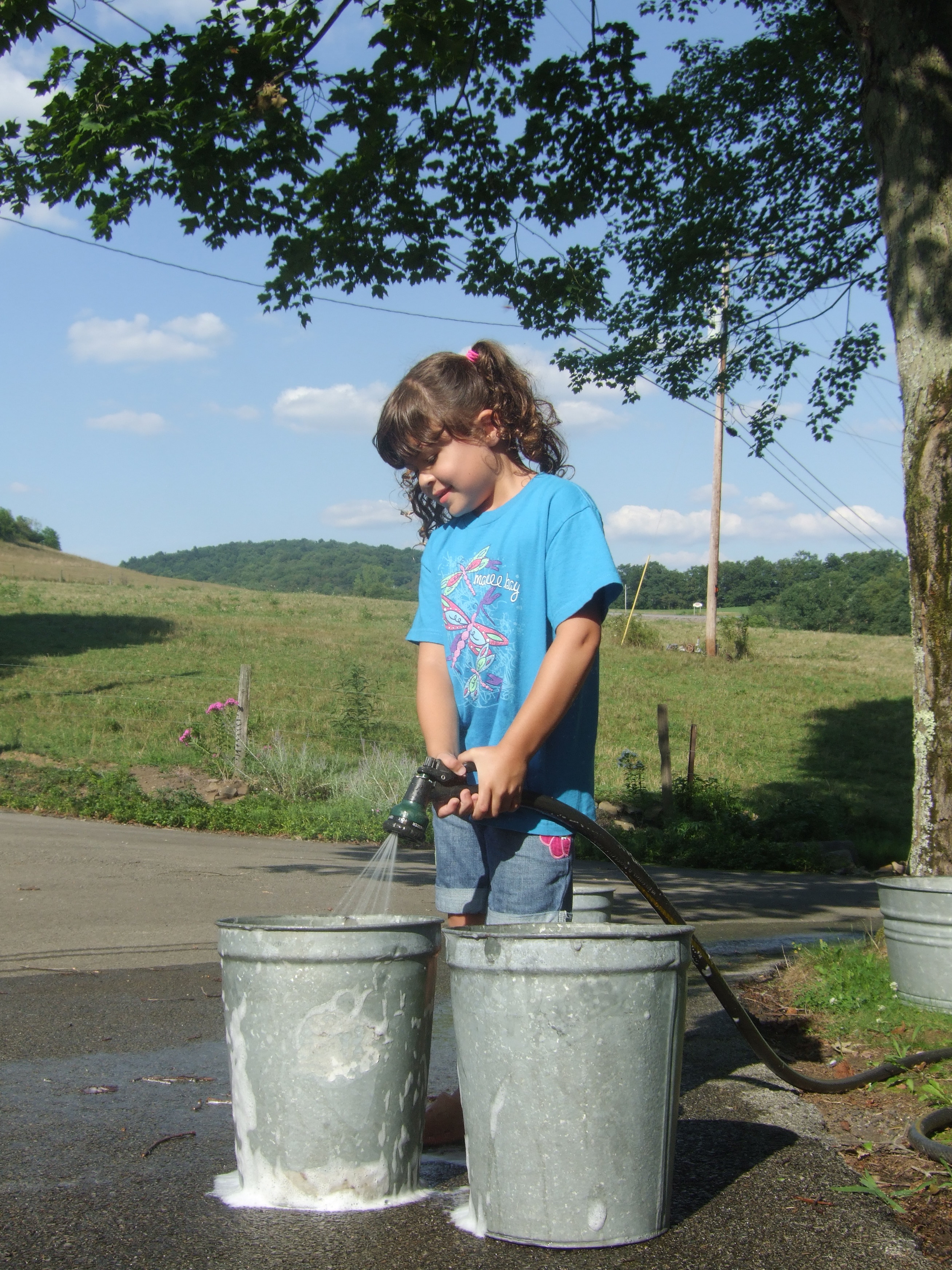   |
|
PRODUCTS
|
|
 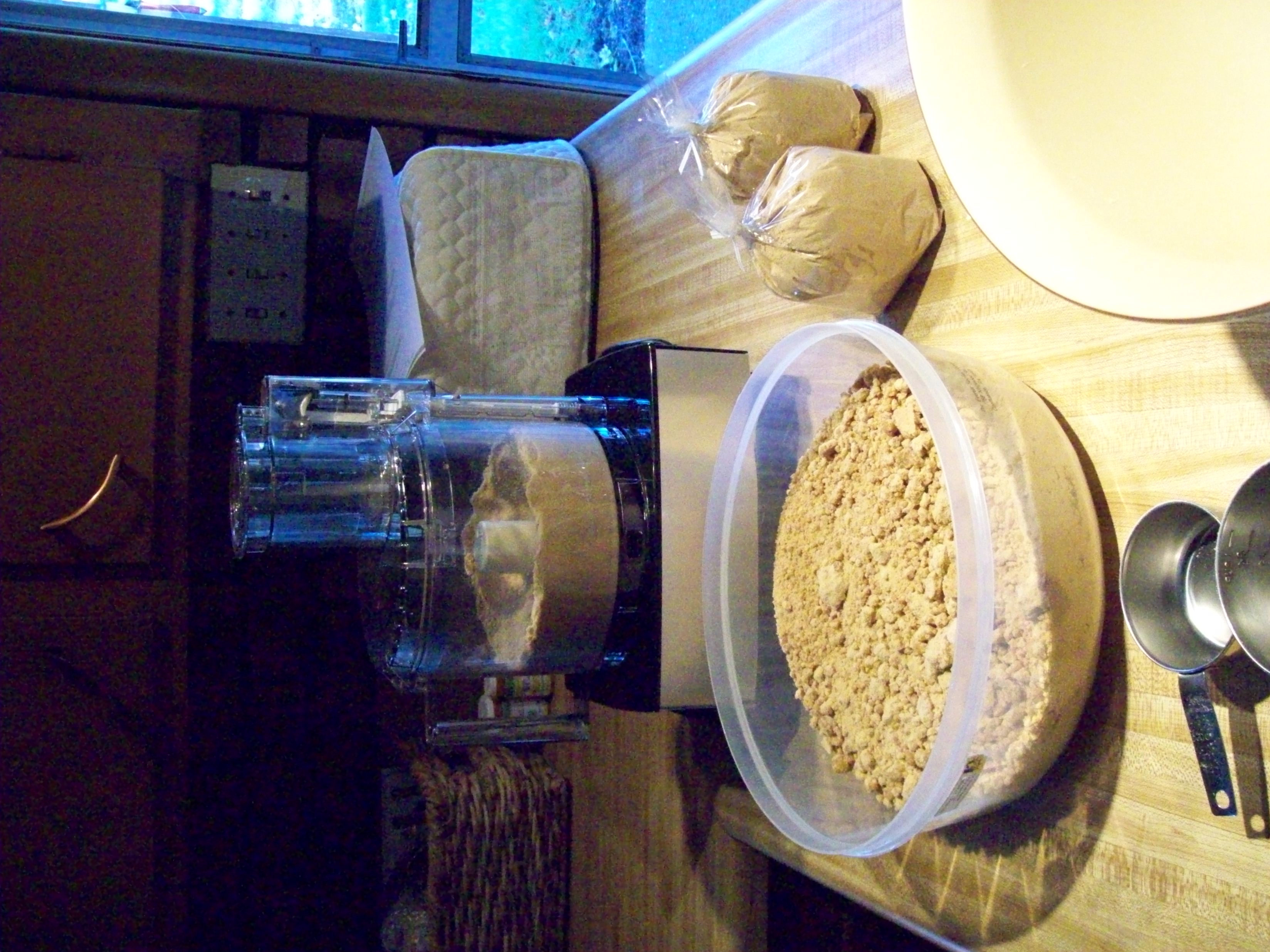   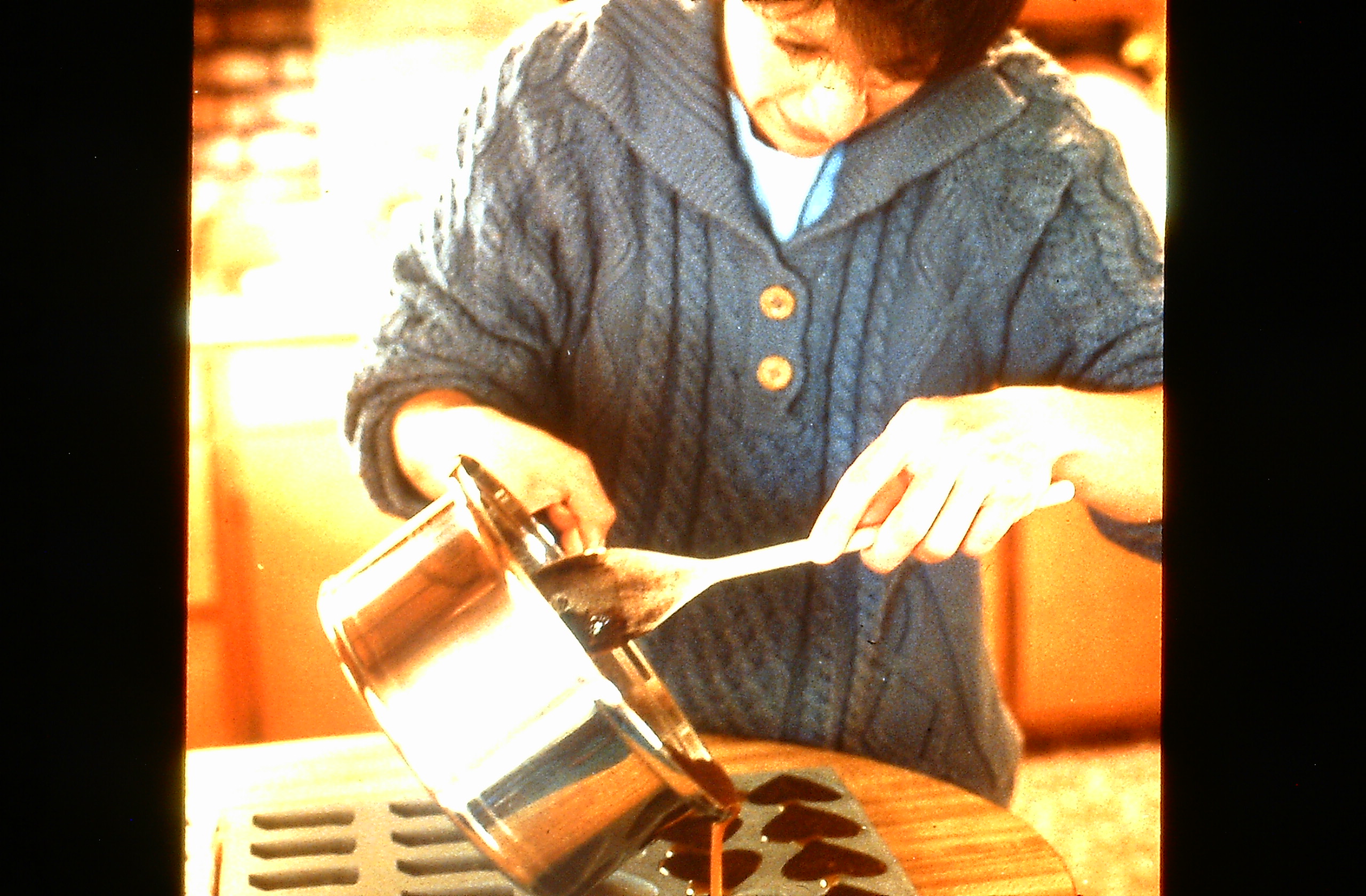 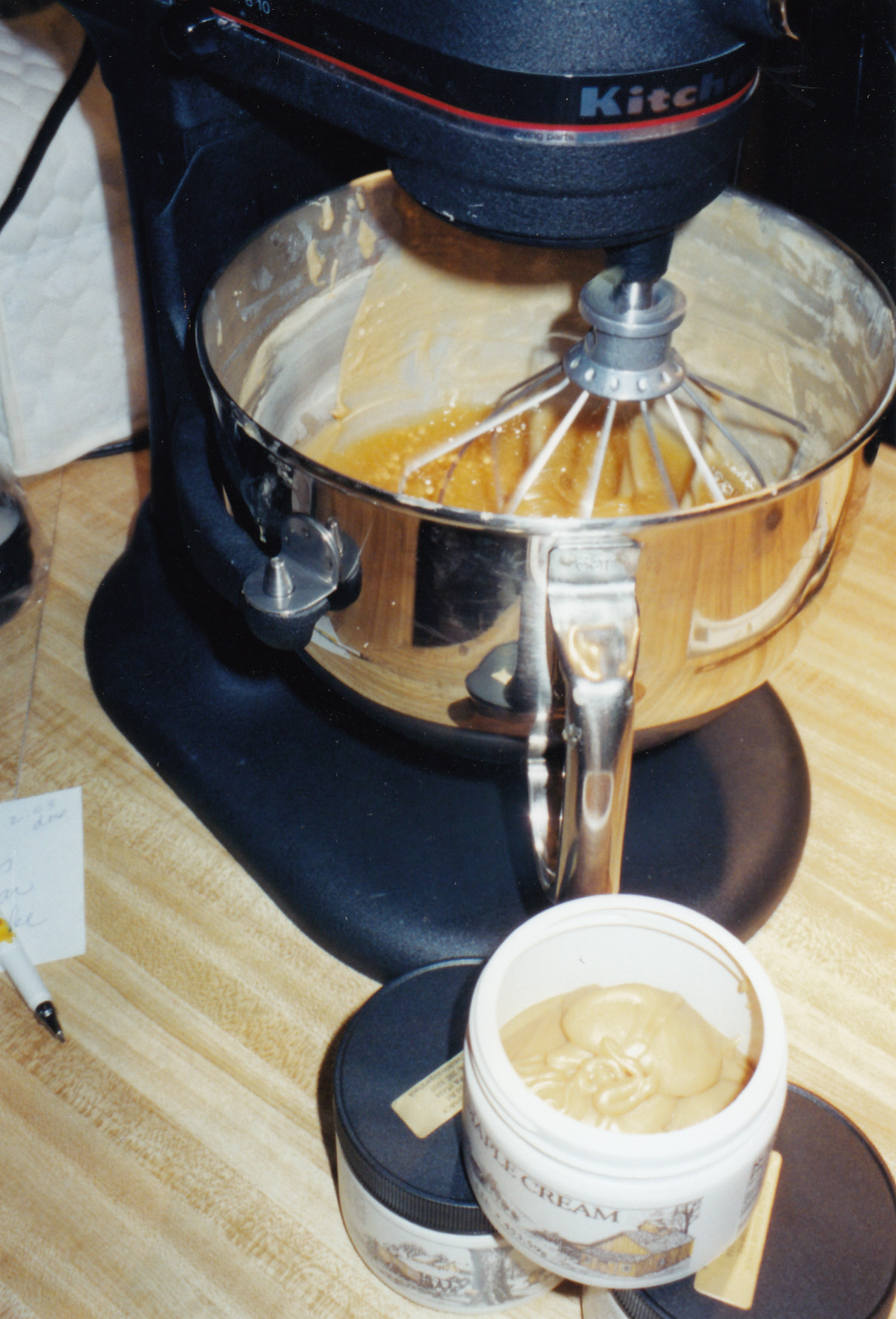 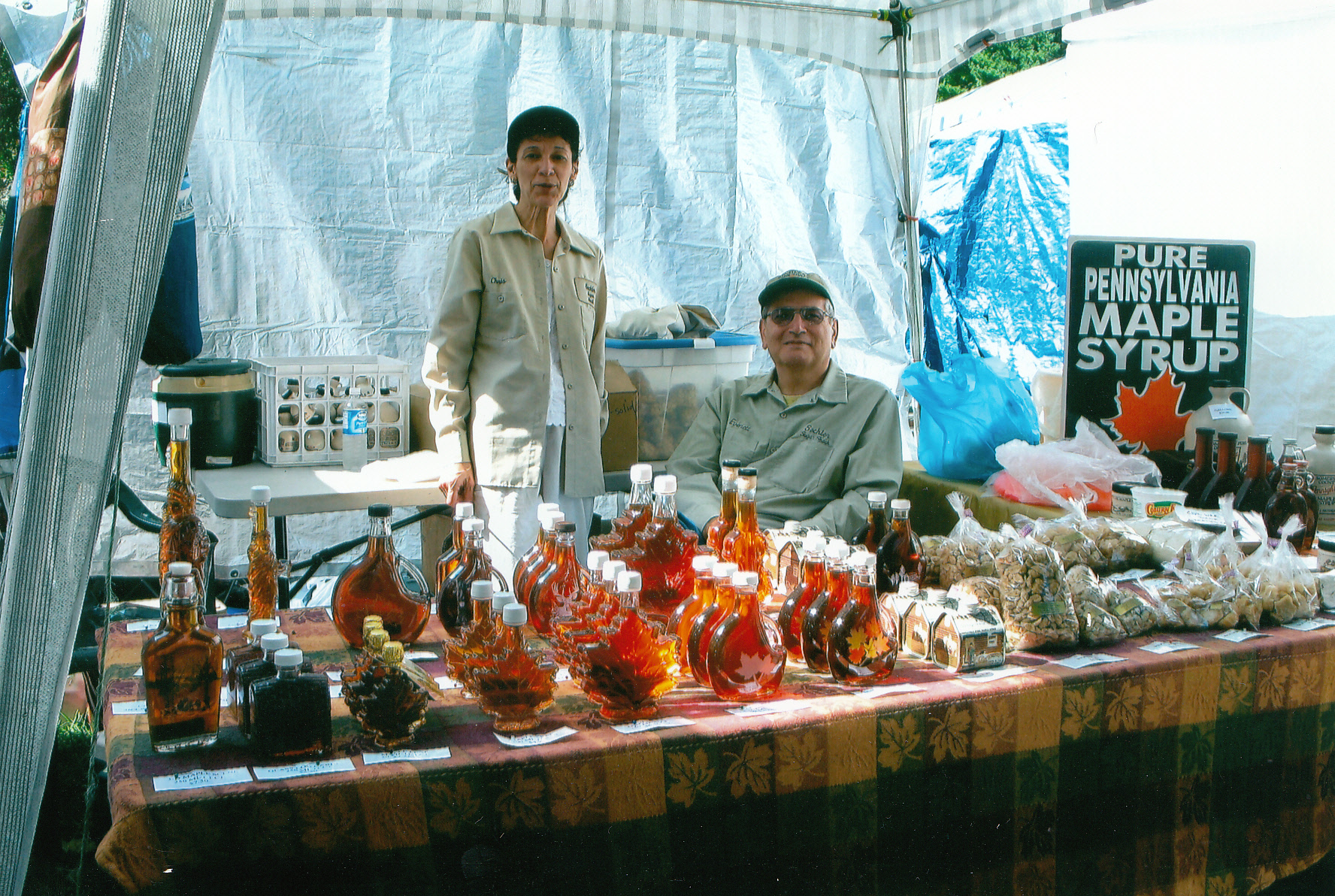 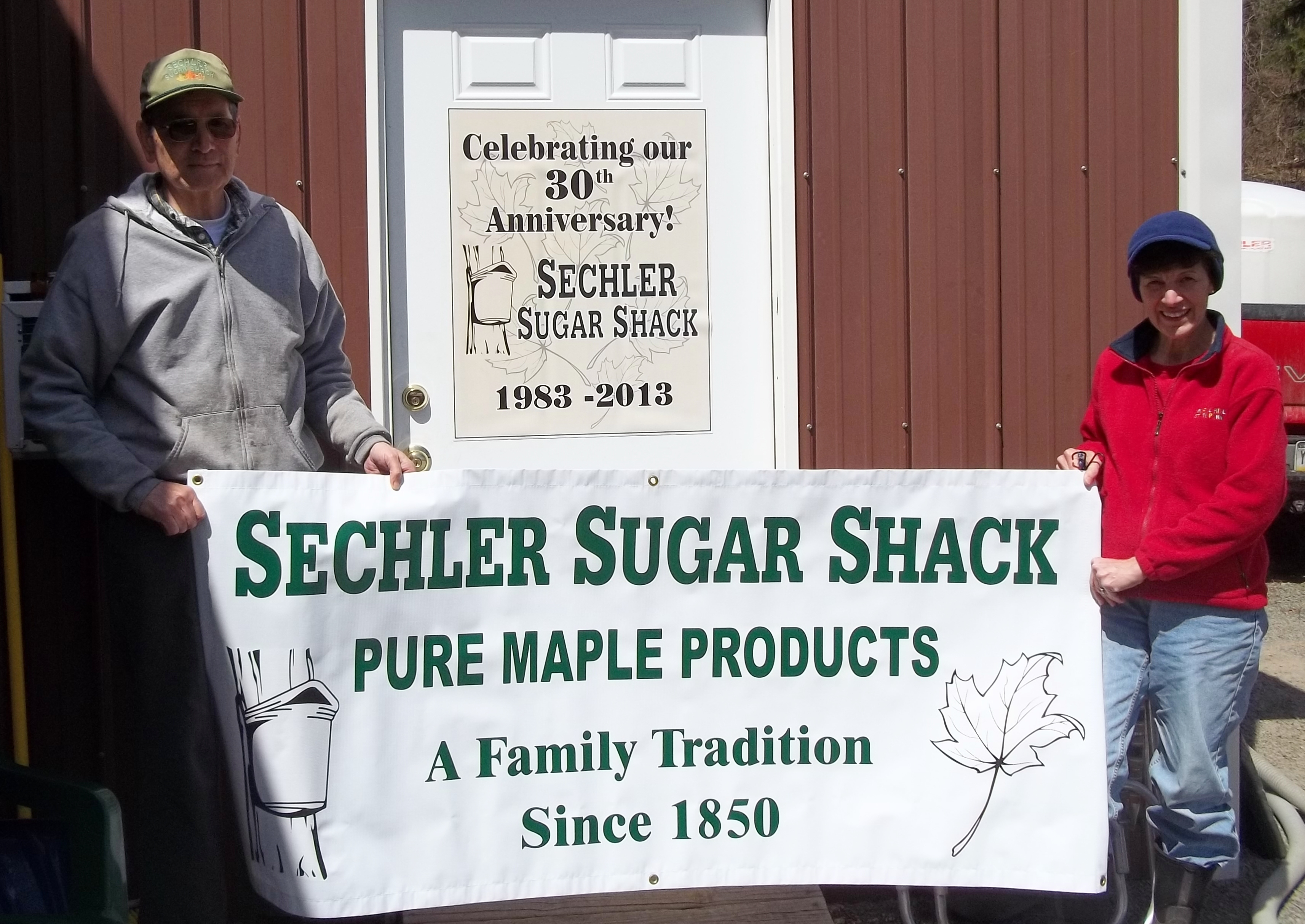 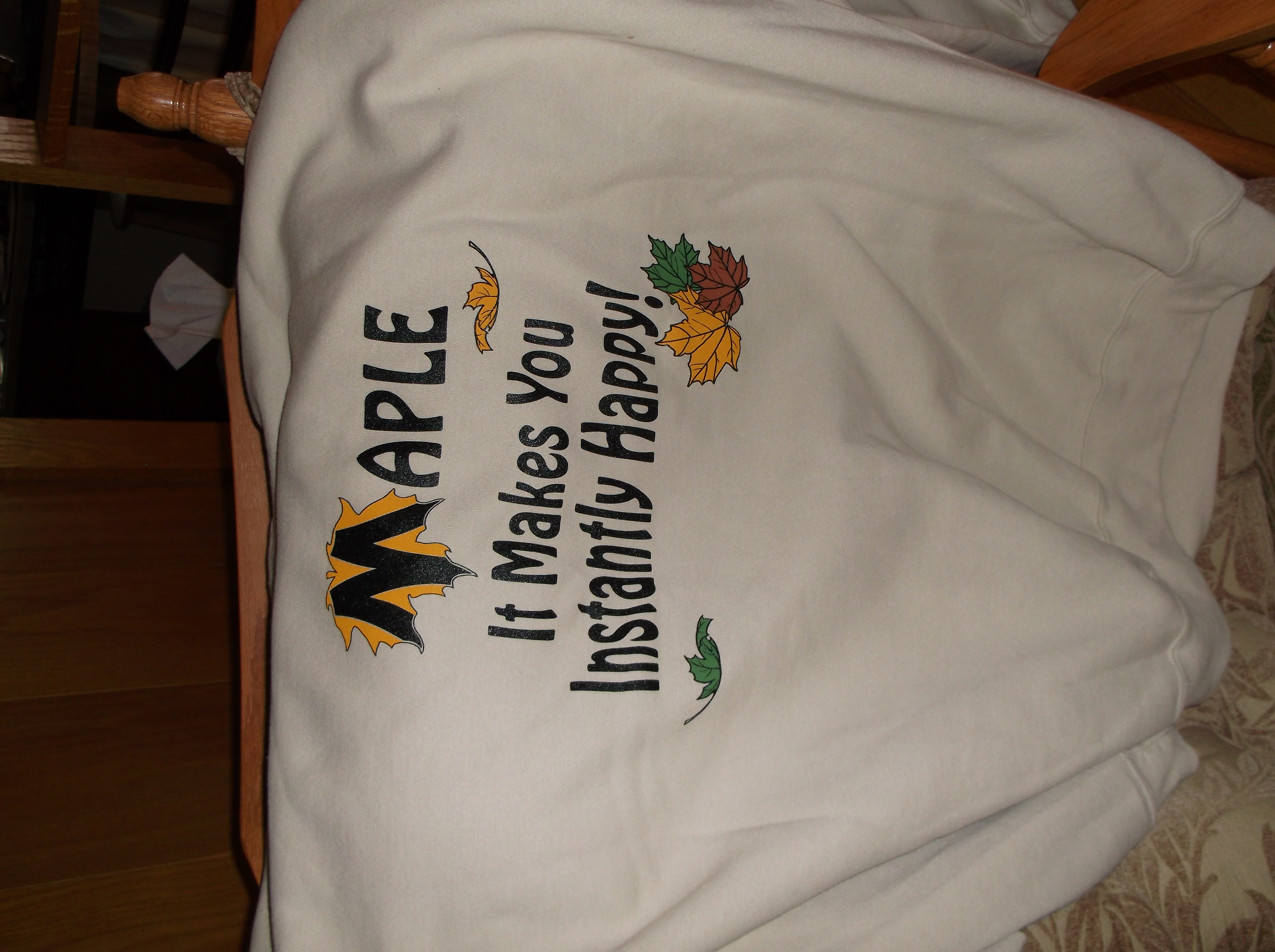
|
| HENRY |
 |


























































